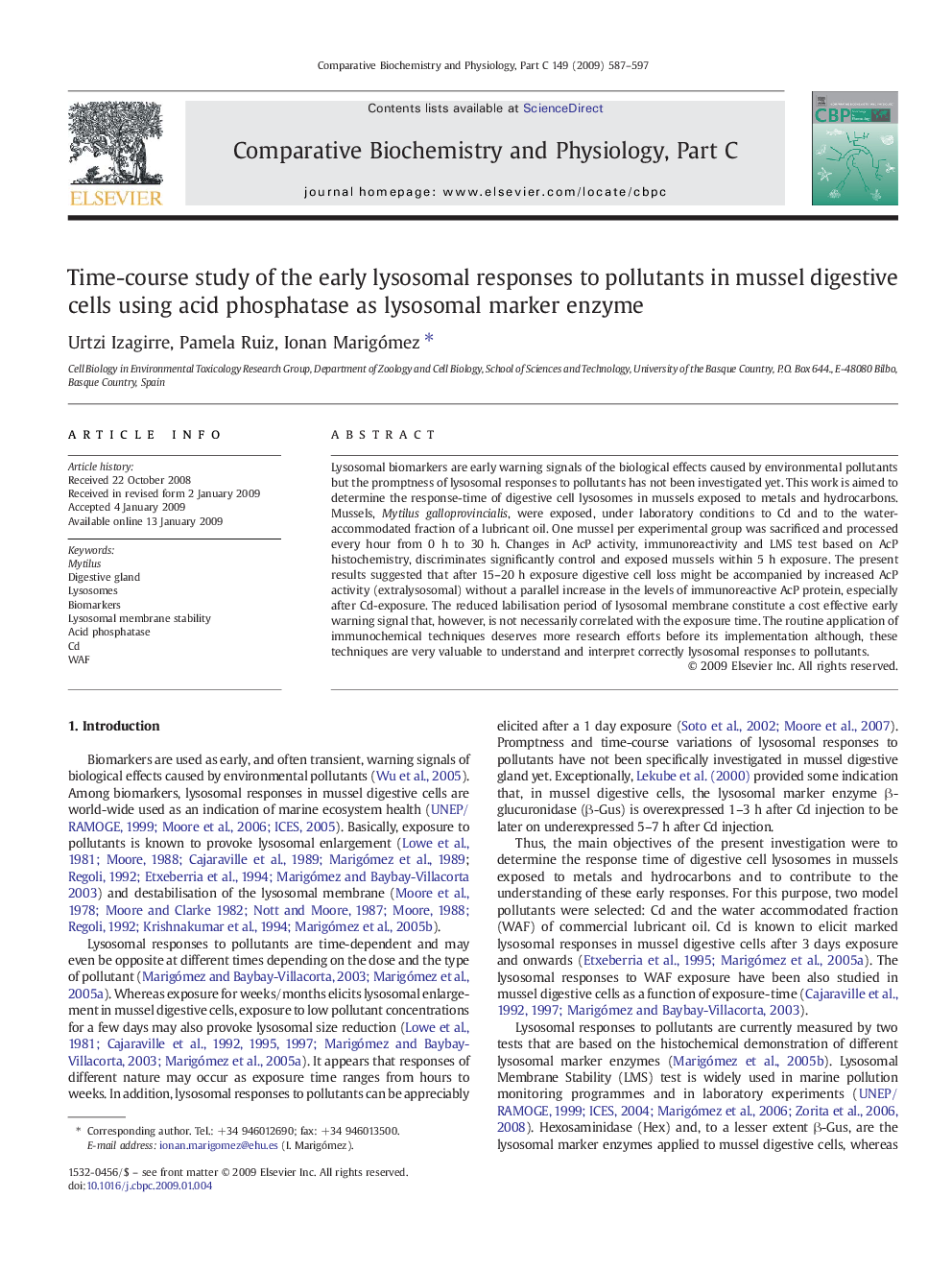| Article ID | Journal | Published Year | Pages | File Type |
|---|---|---|---|---|
| 1978009 | Comparative Biochemistry and Physiology Part C: Toxicology & Pharmacology | 2009 | 11 Pages |
Lysosomal biomarkers are early warning signals of the biological effects caused by environmental pollutants but the promptness of lysosomal responses to pollutants has not been investigated yet. This work is aimed to determine the response-time of digestive cell lysosomes in mussels exposed to metals and hydrocarbons. Mussels, Mytilus galloprovincialis, were exposed, under laboratory conditions to Cd and to the water-accommodated fraction of a lubricant oil. One mussel per experimental group was sacrificed and processed every hour from 0 h to 30 h. Changes in AcP activity, immunoreactivity and LMS test based on AcP histochemistry, discriminates significantly control and exposed mussels within 5 h exposure. The present results suggested that after 15–20 h exposure digestive cell loss might be accompanied by increased AcP activity (extralysosomal) without a parallel increase in the levels of immunoreactive AcP protein, especially after Cd-exposure. The reduced labilisation period of lysosomal membrane constitute a cost effective early warning signal that, however, is not necessarily correlated with the exposure time. The routine application of immunochemical techniques deserves more research efforts before its implementation although, these techniques are very valuable to understand and interpret correctly lysosomal responses to pollutants.
